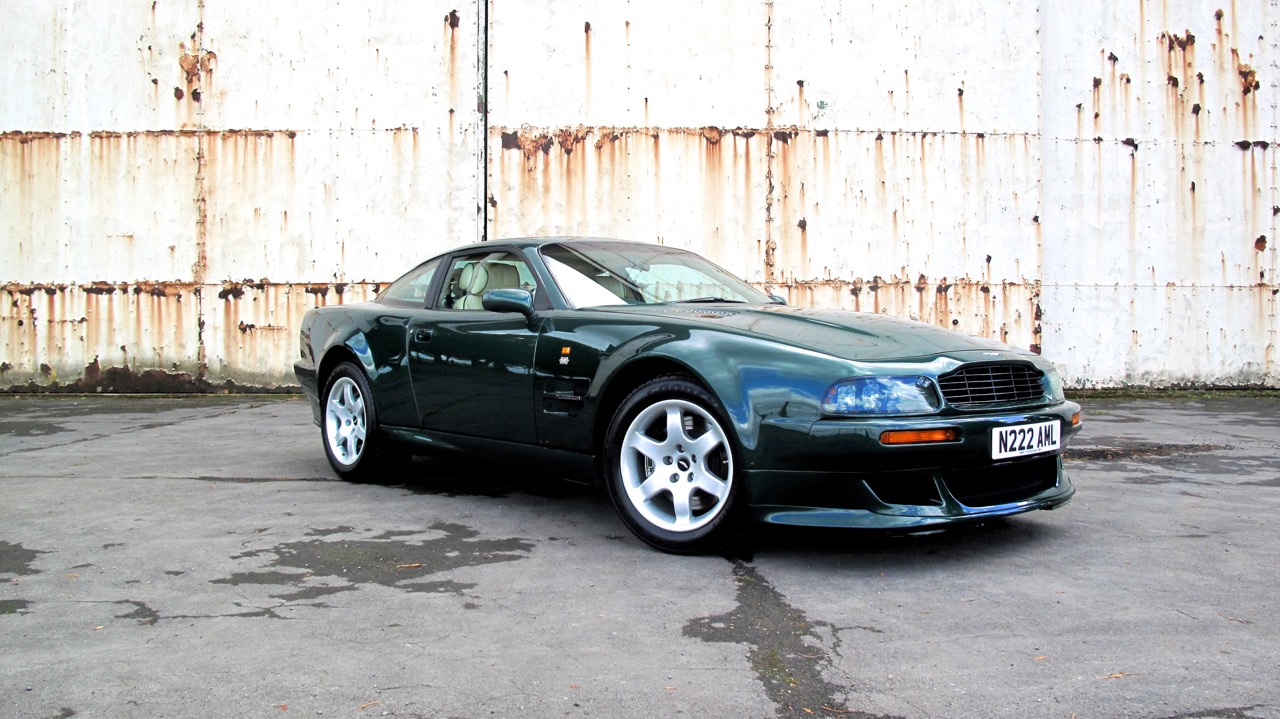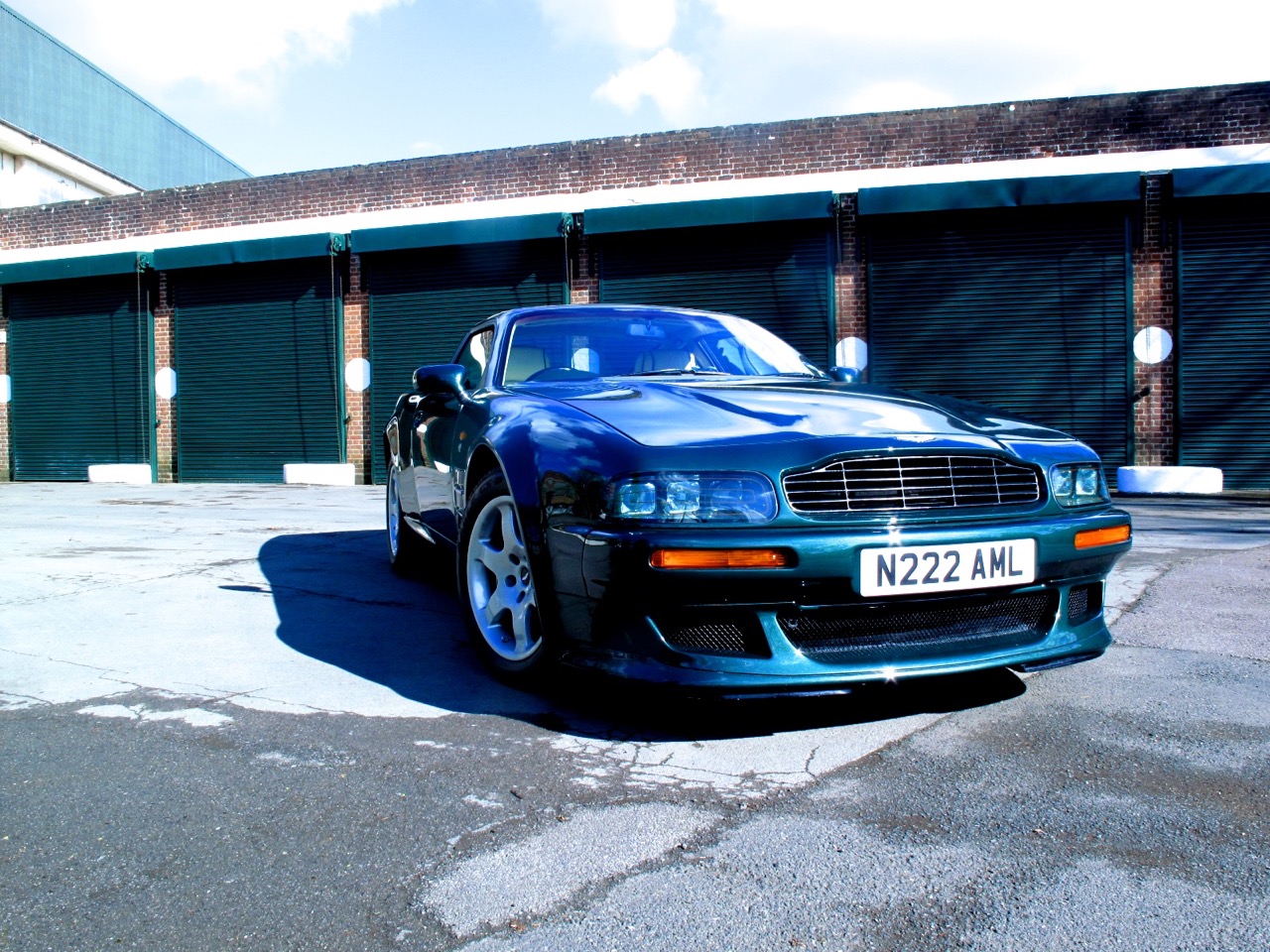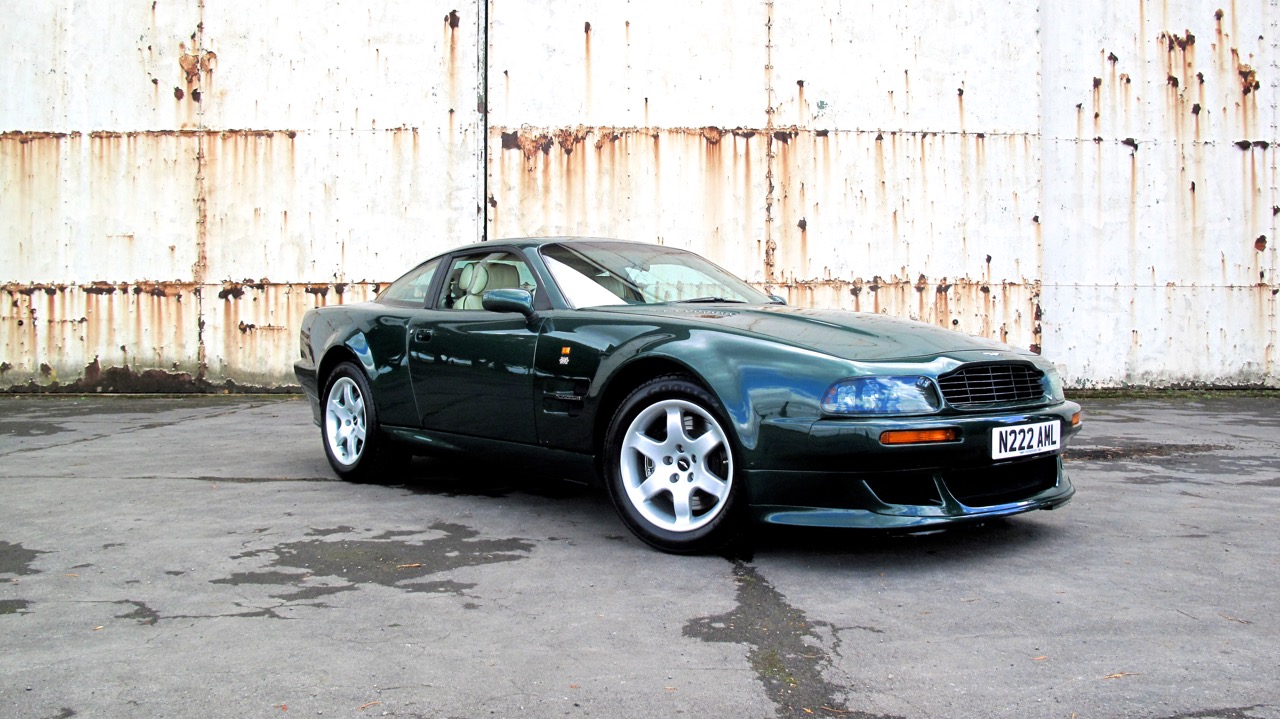1996 Aston Martin Vantage V550
Legends are pleased to offer the last of the true coach built, heavy weight Aston Martin bruisers for sale. The rare and iconic Vantage V550 offers ballistic performance and exclusivity placing these cars in line with the original ethos of the Vantage name and heritage.
N222 AML stands In fabulous condition, finished in classic Buckinghamshire Green with Magnolia and Dark Green Pipe. Extensive and detailed full Aston Martin Service history, N222 AML has clearly been cherished throughout her life.
As one of only 236 Factory delivered hand made examples, these sort after cars offer a new owner exclusivity with low volume investment confidence.
Specification;
Model: Vantage V550
Regestration: N222 AML
Year: 1996
Mileage: 39000
Hand of Drive: RHD
Engine: 5.5 litre twin supercharged.
Transmission: Manual 6 speed
Exterior: Buckinghamshire Green
Interior: Magnolia with Dark Green Piping
Model History (Octane / Peter Tomalin)
Introduced in 1993 as a replacement to the Virage, the new Aston Martin Vantage had the benefit of new Ford funding and R&D to make significant changes to performance and drivability. The V8 engine was further developed with the addition of two superchargers and the latest engine management systems to give it an impressive output of 550bhp, 0-60 in 4.5 secs and 190mph top speed! Making it one of the fastest road cars in the world! Although the new car had the same wheelbase as the Virage the chassis was extensively lightened and significantly re-designed at the rear to vastly improve the cars handling. In order to cope with the cars brutal performance the brakes and suspension were up rated and wider wheels and tyres fitted as standard. The new Vantage also benefitted from a new body design to give it a fresher and more purposeful stance and of course being an Aston Martin, new levels of interior comfort were also attained!
These enormously impressive cars are very rare with a total of just 236 ever produced, and only 97 LHD examples, and not surprisingly they have become very collectable as significant models in the Aston Martin range.
The euphoria that greeted the launch of the Virage in 1989 didn’t last very long. The first completely new Aston Martin in two decades had been warmly welcomed by the press, and by Aston’s loyal fanbase, but within a couple of years sales had fallen off and the mood had changed. The general feeling was that the Virage lacked both firepower and road presence.
The boys in Works Service were first to respond to the clamour for something a bit ballsier, and in January 1992 began offering a 465bhp 6.3-litre engine conversion, together with bigger brakes, firmer suspension, wider wheels and tyres, and bulging wheelarches.
It was a bit of a hotrod, but it worked. The press lapped it up, and Works eventually converted 40 cars. (At around £60k a pop, on top of the £132,000 it cost to buy the standard Virage, the boost to Aston’s coffers was as welcome as the boost to the Virage’s image.)
Meanwhile, the engineering department was developing the ‘official’ super-Virage, and in September 1992 it made its debut at the British motor show. Simply called Vantage, everything about it seemed right, its wide, low, muscular stance oozing presence but also sophistication, from its jutting chin and fared-in headlamps (three per side, a system borrowed from the late-80s Alfa SZ), through its sculpted sills and evocatively flared arches, to its subtly flicked-up tail and four round tail-lights. John Heffernan and Ken Greenley had worked a remarkable transformation on their original Virage design (in fact only roof and doors were carried over).
Under the newly louvred bonnet, the big news was the addition of twin superchargers, lifting the output of the standard-capacity 5.3-litre V8 to 550bhp, with a matching 550lb ft of torque at 4000rpm. It was by some margin the most powerful production car the company had yet built and, at the time, the world’s most powerful production engine. The top speed was 186mph (measured, not claimed) and the 0-100mph time, despite a kerbweight of almost two tons, just 10.1 seconds. Aston Martin was back in the supercar business.
Tellingly, nowhere in the launch blurb was the Virage name mentioned; this was, as far as Aston was concerned, a wholly new model. The interior had been redesigned and now had airbags as an option for the first time (though the air-bagged steering wheel was particularly ugly). The rear suspension ditched the Virage’s complex A-frame and went back to the classic de Dion set-up, while springs, dampers and anti-roll bars were all beefed-up. The 18in wheels, the Goodyear Eagle tyres, the mammoth 362mm front discs and Group C calipers, all were unique to the Vantage, as was the ZF six-speed gearbox, one of very few deemed robust enough to handle the torque. Final development miles were completed by one Jackie Stewart, at the time a member of the Aston Martin board.
Deliveries started in late 1993, and, while the Vantage was never going to sell in huge numbers (that was the soon-to-be launched DB7’s job), it hit the mark with well-heeled customers of the old school. Road testers loved it, and schoolboys everywhere had a new poster car.



















